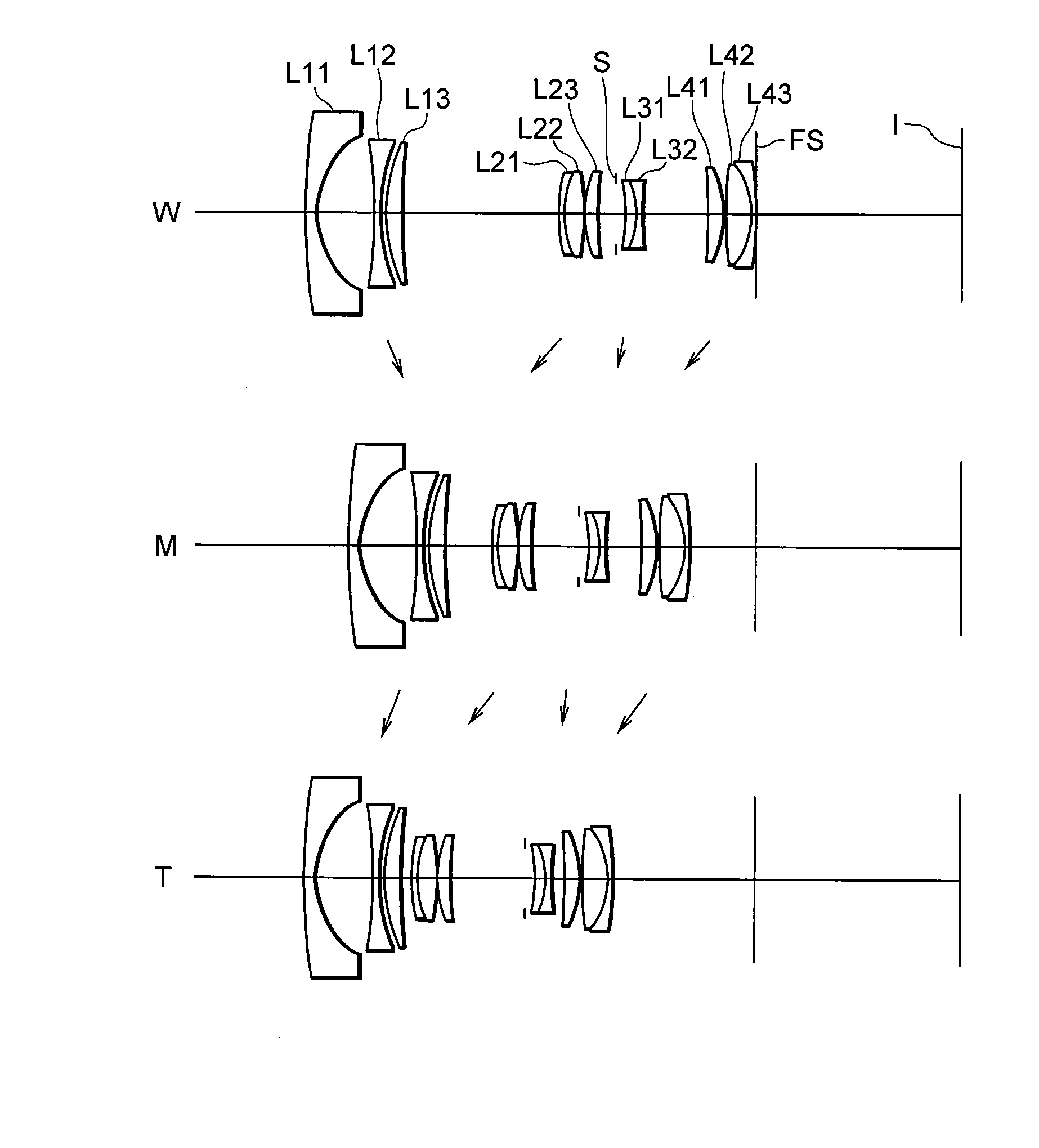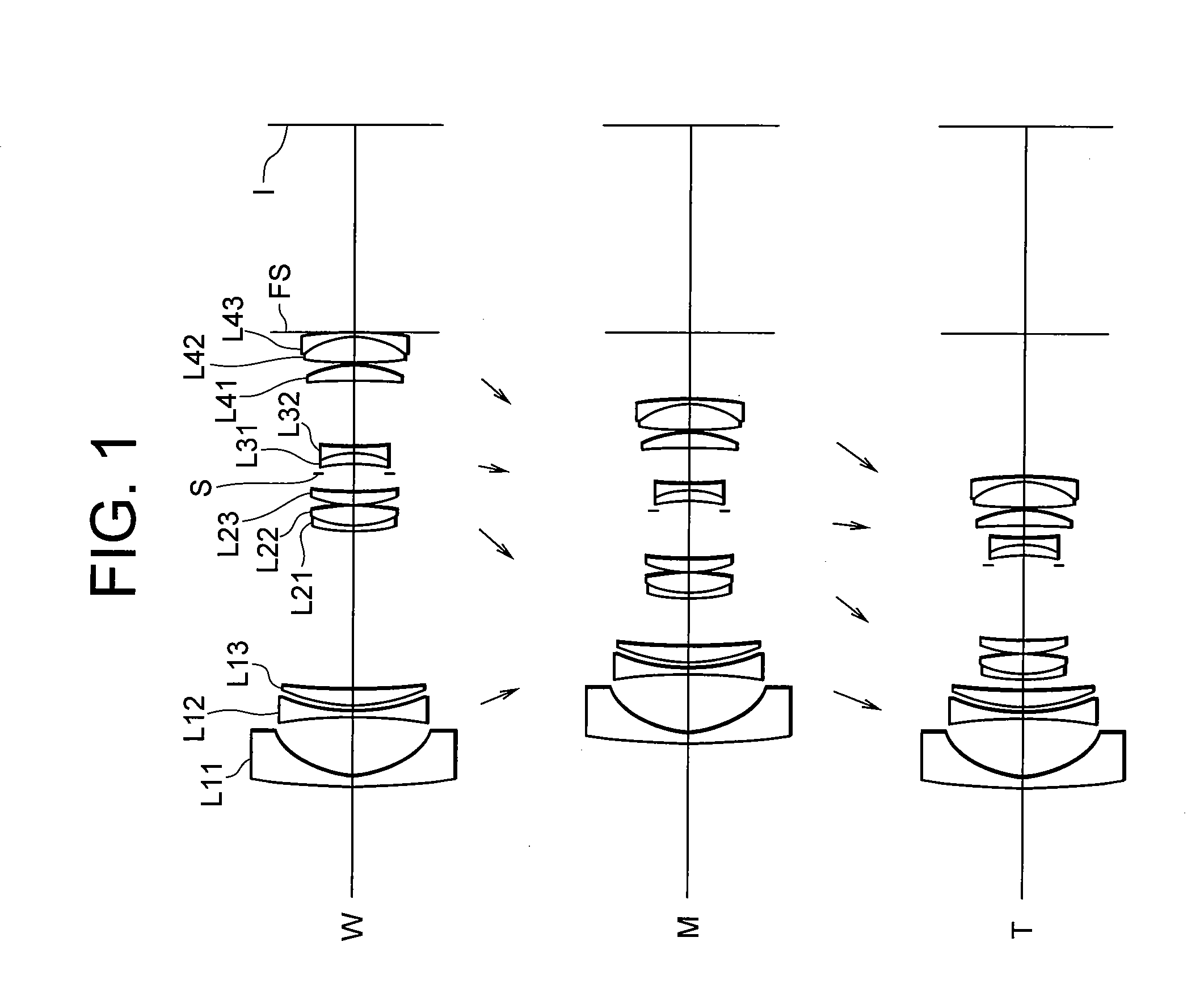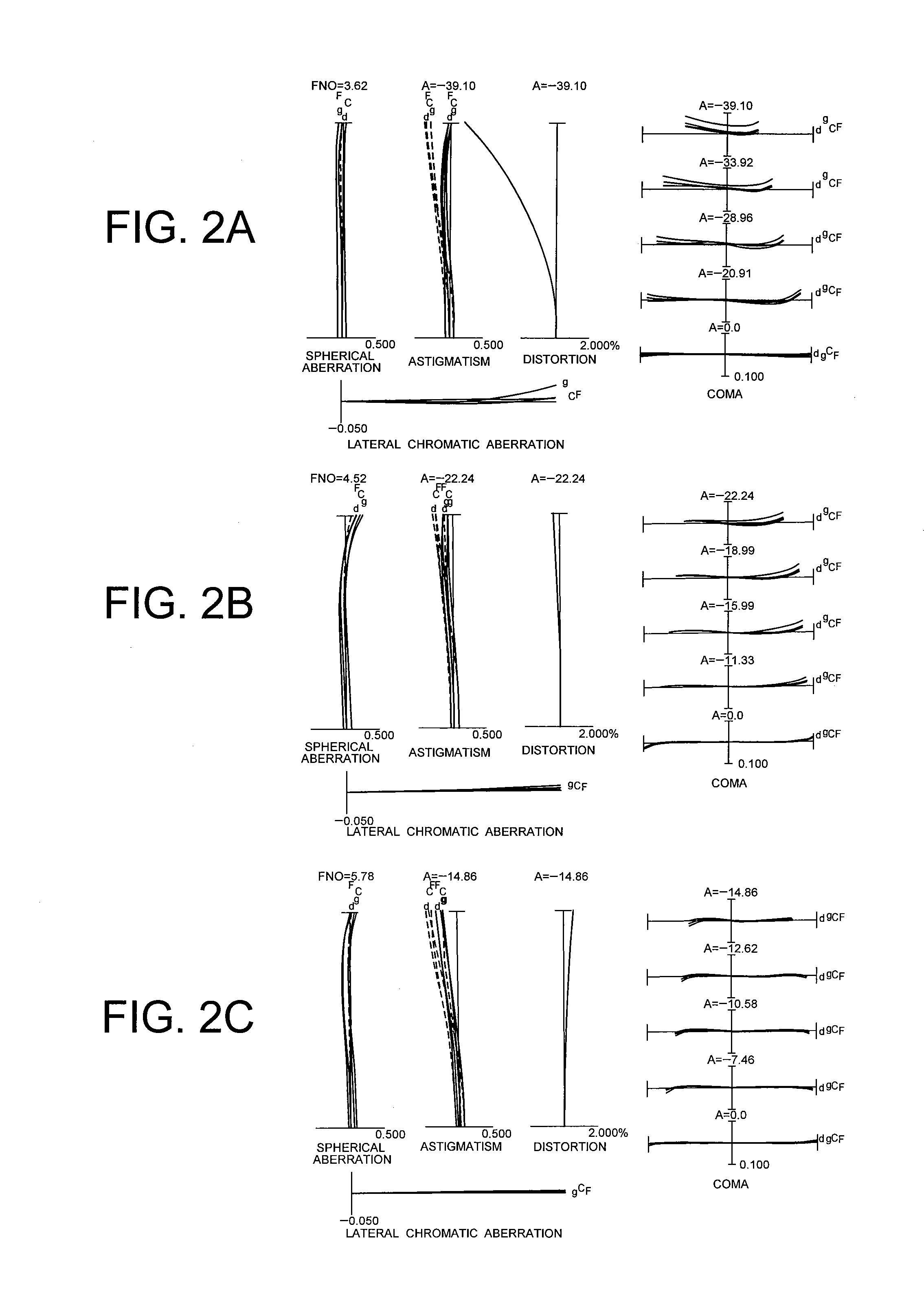Zoom lens system, imaging apparatus and method for varying focal length
a zoom lens and imaging apparatus technology, applied in the field of zoom lens systems, imaging apparatus and methods for varying focal lengths, can solve problems such as difficulty in obtaining preferable optical performance over the entire zoom range, and achieve the effect of high optical performan
- Summary
- Abstract
- Description
- Claims
- Application Information
AI Technical Summary
Benefits of technology
Problems solved by technology
Method used
Image
Examples
example 1
[0090]FIG. 1 is a diagram showing a lens configuration of a zoom lens system according to Example 1.
[0091] The zoom lens system according to Example 1 is composed of, in order from an object, a first lens group G1 having negative refractive power, a second lens group G2 having positive refractive power, a third lens group G3 having negative refractive power, and a fourth lens group G4 having positive refractive power.
[0092] The first lens group G1 is composed of, in order from the object, a negative meniscus lens L11 having a convex surface facing the object, a double concave negative lens L12, and a positive meniscus lens L13 having a convex surface facing the object.
[0093] The second lens group G2 is composed of, in order from the object, a cemented positive lens constructed by a negative meniscus lens L21 having a convex surface facing the object cemented with a double convex positive lens L22, and a positive meniscus lens L23 having a convex surface facing the object.
[0094] ...
example 2
[0113]FIG. 3 is a diagram showing a lens configuration of a zoom lens system according to Example 2.
[0114] The zoom lens system according to Example 2 is composed of, in order from an object, a first lens group G1 having negative refractive power, a second lens group G2 having positive refractive power, a third lens group G3 having negative refractive power, and a fourth lens group G4 having positive refractive power.
[0115] The first lens group G1 is composed of, in order from the object, a negative meniscus lens L11 having a convex surface facing the object, and a cemented negative lens constructed by a double concave negative lens L12 cemented with a double convex positive lens L13.
[0116] The second lens group G2 is composed of, in order from the object, a cemented positive lens constructed by a negative meniscus lens L21 having a convex surface facing the object cemented with a double convex positive lens L22, and a positive meniscus lens having a convex surface facing the obj...
example 3
[0125]FIG. 5 is a diagram showing a lens configuration of a zoom lens system according to Example 3.
[0126] The zoom lens system according to Example 3 is composed of, in order from an object, a first lens group G1 having negative refractive power, a second lens group G2 having positive refractive power, a third lens group G3 having negative refractive power, and a fourth lens group G4 having positive refractive power.
[0127] The first lens group G1 is composed of, in order from the object, a negative meniscus lens L11 having a convex surface facing the object, and a cemented negative lens constructed by a double concave negative lens L12 cemented with a positive meniscus lens L13 having a convex surface facing the object.
[0128] The second lens group G2 is composed of, in order from the object, a double convex positive lens L21, and a cemented positive lens constructed by a double convex positive lens L22 cemented with a double concave negative lens L23.
[0129] The third lens group...
PUM
 Login to View More
Login to View More Abstract
Description
Claims
Application Information
 Login to View More
Login to View More - R&D
- Intellectual Property
- Life Sciences
- Materials
- Tech Scout
- Unparalleled Data Quality
- Higher Quality Content
- 60% Fewer Hallucinations
Browse by: Latest US Patents, China's latest patents, Technical Efficacy Thesaurus, Application Domain, Technology Topic, Popular Technical Reports.
© 2025 PatSnap. All rights reserved.Legal|Privacy policy|Modern Slavery Act Transparency Statement|Sitemap|About US| Contact US: help@patsnap.com



